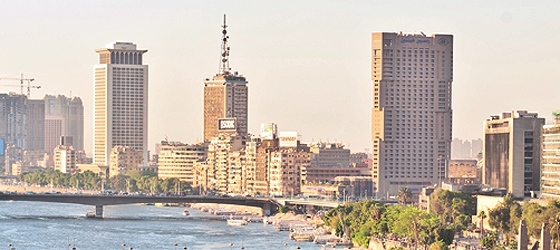The acceleration of a long-awaited reform programme and continued economic recovery, particularly in the retail and energy sectors, made 2016 a transitional year for Egypt.
Funding approval
On the back of the government making progress on economic reforms, including allowing the Egyptian pound to trade freely, in mid-November the IMF approved a $12bn bailout package.
Aimed at reducing external imbalances, bringing down public debt and boosting growth, the IMF deal initially provides $2.75bn – with the remainder to be released in tranches over the course of three years, contingent on five reviews of the government’s reform drive.
Getting with the program
The conditions for disbursement stipulated by the IMF included changes to the tax system and subsidy reductions, as well as the currency float.
At the end of August the Egyptian parliament approved a value-added tax (VAT) of 13%, which will be increased to 14% at the start of the next financial year. The introduction of VAT should help broaden the tax base and bolster government revenues.
In the same month the government trimmed petrol subsidies and revealed plans to increase fuel prices to 65% of their cost during FY 2016/17.
The country’s ballooning subsidy bill has drained financial resources needed for developing infrastructure, health and education, while also distorting economic incentives.
Currency depreciation
Following the anticipated currency float in November, the Egyptian pound lost half its value against the dollar. Despite fears that a weaker pound could drive inflation even higher, Egyptian stocks jumped following the announcement. Many stakeholders also point to the fact that the devaluation will increase the competitiveness of the country’s exports and make it an even more affordable tourism destination.
The move should also help trim the current account deficit – something that remains a risk factor for economic stability. Egypt’s current debt is hovering around 100% of GDP, according to the IMF, with the budget deficit coming in at around 12.2% of GDP in FY 2015/16. The government aims to reduce this to below 10% of GDP by the end of FY 2017/18.
Retailers on the rebound
Several sectors were already regaining momentum in 2016. In September the country was reinstated onto AT Kearney’s Global Retail Development Index for the first time since 2011.
The management consultancy company forecast that the modern retail segment will enjoy a compound annual growth rate of 10% this year and next, potentially doubling by 2021 on the back of decreased risk and a growing population – expected to reach 100m by 2020.
Egypt’s retail sector continues to evolve as modern retailers’ develop a stronger market presence and consumers increasingly turn to supermarkets and hypermarkets, rather than traditional stores.
Boosting power capacity
A drive to increase power generation has been another feature of 2016, with an eye on rapidly rising household demand and Egypt’s growing industrial sector.
The Egyptian authorities set a target of adding 3.5 GW of capacity by the end of this year through investments totaling LE52bn ($2.8bn), while a further LE12bn ($643.3m) was allocated to transmission and LE10bn ($536.1m) to distribution.
Germany’s Siemens continued to push ahead with its three 4.8-GW combined-cycle gas-fired power plants, with the first 400-MW unit at the Beni Suef power plant commissioned in November. Five more units should be added to the site by the end of the year.
The Ministry of Electricity and Renewable Energy (MERE) has also set out plans to increase the proportion of energy generated from renewable sources from 12% to 20% by 2022.
In November the government announced it had signed power-purchase agreements (PPAs) worth €600m ($637.4m) for solar plants with around 400 MW of capacity.
The fall in the value of the Egyptian pound slowed the implementation of Egypt’s renewable strategy, with international investors concerned about currency risk. However, changes to Egypt’s favorable feed-in tariff program have strengthened the investment case.
In the medium term, MERE aims to add 870 MW of installed capacity from wind power and 2.5 GW from solar photovoltaic production by 2018.
Upstream ambitions
The upstream energy sector has also moved forward in 2016, despite sustained low global commodity prices.
In late August Shell announced that it had discovered 142bn cu meters of natural gas at its Alam El Shawish concession in Egypt’s Western Desert, one of the largest finds in the region in recent years.
Egypt’s low operating costs mean that onshore production typically costs less than $10 a barrel, while the drop in the Egyptian pound and an environment conducive to investment have drawn interest during a slow period for the global upstream sector.
Going into 2017, Egypt faces substantial structural challenges, including double-digit inflation, a large budget deficit, high unemployment, and the difficulties caused by the reduction in subsidies, as well as the drop in the value of the Egyptian pound.
However, investors in a number of sectors remain optimistic about the country’s fundamentals, and continuing reforms could prove vital in driving a sustained recovery.
Oxford Business Group
5 December






















































